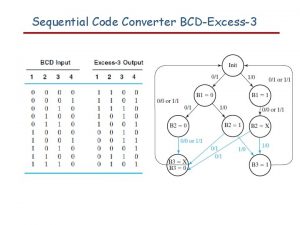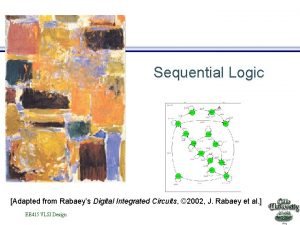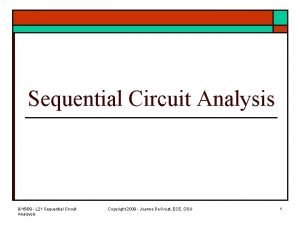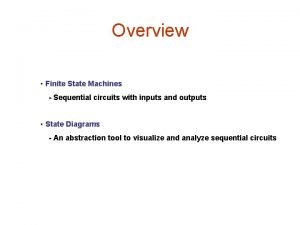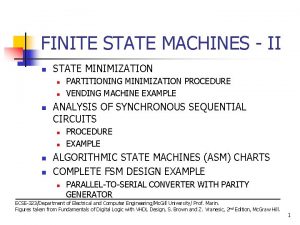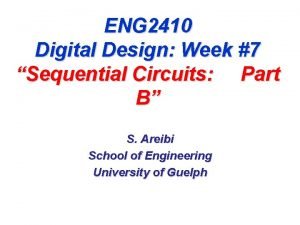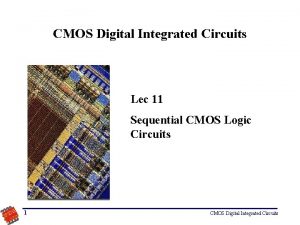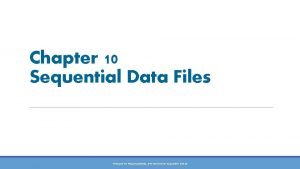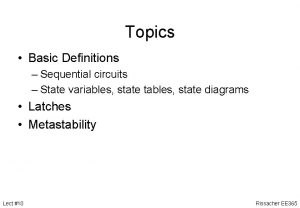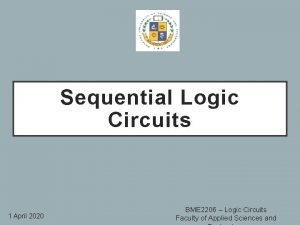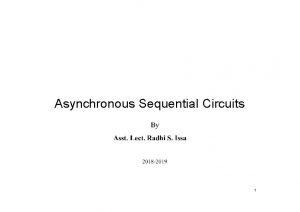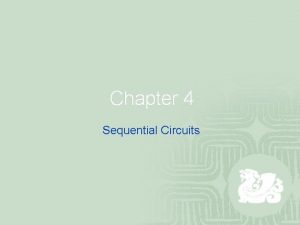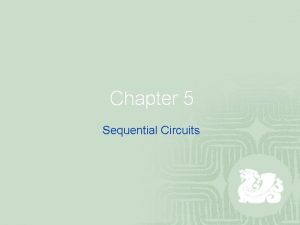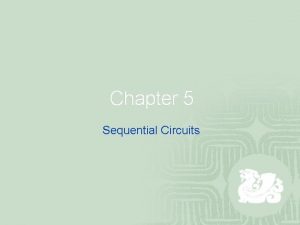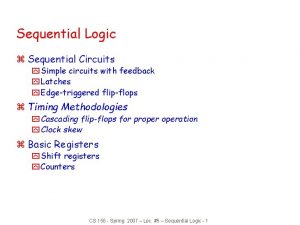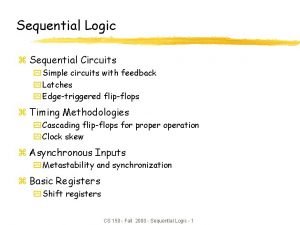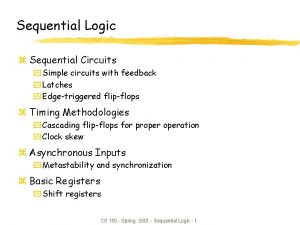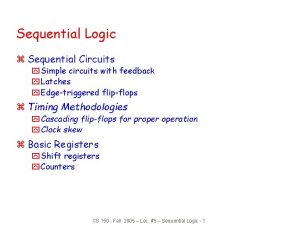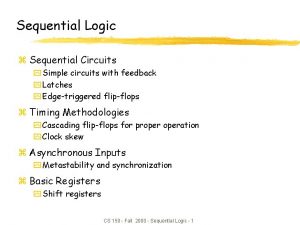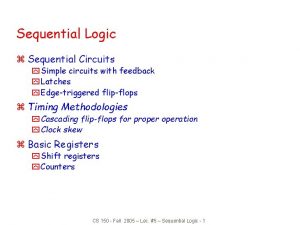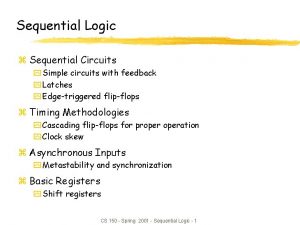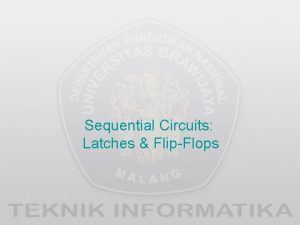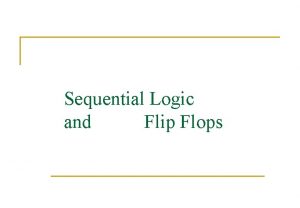Sequential logic circuits Outline Sequential Circuit Models Asynchronous
















- Slides: 16

Sequential logic circuits

Outline • Sequential Circuit Models – Asynchronous – Synchronous • Latches • Flip-Flops CS 3402 --Digital Logic Sequential logic circuits 2

Sequential logic circuits • The main characteristic of combinational logic circuits is that their output values depend on their present input values. • Sequential logic circuits differ from combinational logic circuits because they contain memory elements so that their output values depend on both present and past input values CS 3402 --Digital Logic Sequential logic circuits 3

Sequential logic circuits Sequential circuits can be Asynchronous or synchronous. Asynchronous sequential circuits change their states and output values whenever a change in input values occurs. Synchronous sequential circuits change their states and output values at fixed points of time, i. e. clock signals. CS 3402 --Digital Logic Sequential logic circuits 4

Sequential Circuit Models Universal model CS 3402 --Digital Logic Sequential logic circuits 5

Combinational circuit model Mealy machine model Moore machine model CS 3402 --Digital Logic Sequential logic circuits 6

Memory Devices Latches A latch is a memory element whose excitation signals control the state of the device. A latch has two stages set and reset. Set stage sets the output to 1. Reset stage set the output to 0. Flip-flops A flip-flop is a memory device that has clock signals control the state of the device. CS 3402 --Digital Logic Sequential logic circuits 7

Latch CS 3402 --Digital Logic Flip-flop Sequential logic circuits 8

Inverter Chains Ring oscillator CS 3402 --Digital Logic Sequential logic circuits 9

Latches RS Latch The RS latch is the basic memory element consists of two cross-coupled NOR gates. It has two input signals, S set signal and R reset signal. It also has two outputs Q and Q'; and two states, a set state when Q = 1 and a reset state when Q = 0 (Q' = 1) CS 3402 --Digital Logic Sequential logic circuits 10

S R Q Q' S R 1 0 0 0 hold 0 0 1 0 reset 0 1 1 0 1 set 0 0 0 1 1 1 unstable 1 1 0 0 CS 3402 --Digital Logic Sequential logic circuits Q 11

S R Q Q' S R 1 0 0 0 unstable 1 1 1 0 0 1 0 reset 0 1 1 0 1 set 1 1 0 1 1 1 hold 0 0 1 1 CS 3402 --Digital Logic Sequential logic circuits Q 12

Flip-Flops A flip-flop is a level-sensitive latch with a clock input. RS flip-flop Q+ = S +R'Q CS 3402 --Digital Logic Sequential logic circuits 13

T (Toggle) flip-flop D Q(t) Q(t+1) 0 0 1 1 1 0 Hold Toggle Q+ = TQ' + T'Q CS 3402 --Digital Logic Sequential logic circuits 14

Master Slave Flip-Flops A master slave flip-flop consists of two latches and an inverter. Master-slave RS flip-flop CS 3402 --Digital Logic Sequential logic circuits 15

Master-Slave JK Flip-Flops CS 3402 --Digital Logic Sequential logic circuits 16
 Combinational logic circuit vs sequential
Combinational logic circuit vs sequential Project management plan example
Project management plan example Is it x y or y x
Is it x y or y x Combinational logic sequential logic 차이
Combinational logic sequential logic 차이 If x = 0 and y = 1, which output line is enabled?
If x = 0 and y = 1, which output line is enabled? Which two states are equivalent state
Which two states are equivalent state Advantages of parallel circuit over series circuit
Advantages of parallel circuit over series circuit Non bistable sequential circuits
Non bistable sequential circuits Analysis of sequential circuits
Analysis of sequential circuits Synchronous sequential circuits examples
Synchronous sequential circuits examples Finite state machine sequential circuits
Finite state machine sequential circuits Asm chart for vending machine
Asm chart for vending machine Analysis of sequential circuits
Analysis of sequential circuits Non bistable sequential circuits
Non bistable sequential circuits Sequential circuits prelude
Sequential circuits prelude Sequential circuits
Sequential circuits State diagram
State diagram





